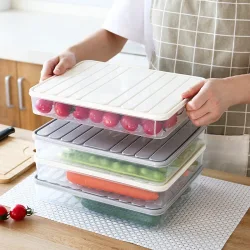What are the plastics commonly used in household?
2023-10-23
Plastics used in households are typically made from various types of plastic polymers, each with its unique properties and characteristics. Common plastics used in household items include:
1. Polyethylene (PE):
- Low-Density Polyethylene (LDPE): Used for items like plastic bags, shrink wrap, and flexible packaging.
- High-Density Polyethylene (HDPE): Used for bottles, containers, and various rigid plastic products.
2. Polypropylene (PP):
- Used for containers, food storage containers, plastic tableware, and various household items due to its high heat resistance and durability.
3. Polyvinyl Chloride (PVC):
- PVC is used in plumbing pipes, vinyl flooring, shower curtains, and electrical insulation.
4. Polystyrene (PS):
- General-Purpose Polystyrene (GPPS): Used in disposable cutlery, CD cases, and some toy construction.
- High-Impact Polystyrene (HIPS): Used in appliance housings, automotive parts, and toys.
5. Polyethylene Terephthalate (PET):
- Commonly used for clear beverage bottles, food containers, and packaging.
6. Polycarbonate (PC):
- Used in products like reusable water bottles, eyeglass lenses, and baby bottles due to its durability and clarity.
7. Acrylonitrile-Butadiene-Styrene (ABS):
- Used in computer and electronics housings, toy components, and luggage due to its strength and impact resistance.
8. Nylon (Polyamide):
- Used for items like toothbrush bristles, fishing lines, and some kitchen utensils.
9. Polyoxymethylene (POM):
- Commonly used for gears, fasteners, and precision mechanical components.
10. Acrylic (PMMA):
- Used in clear and colored acrylic sheets for windows, signs, and home decor.
11. Polyurethane (PU):
- Used in foam cushions, mattresses, and some upholstery due to its comfort and durability.
12. Melamine (Melamine Formaldehyde):
- Used for kitchenware, tableware, and decorative laminates due to its resistance to staining and heat.
13. Epoxy Resin:
- Used for coatings, adhesives, and in some craft and DIY projects.
These plastics are chosen for household items based on their specific properties and suitability for the intended use. It's important to note that some plastics are recyclable, while others may have limited recycling options. Efforts to reduce plastic waste and choose environmentally friendly alternatives are becoming increasingly important in household decision-making.



